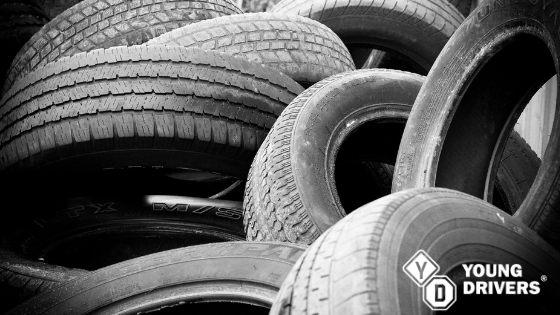When’s the last time you went running in a rundown shoe? Was the rubber sole full of holes? Was the tread completely worn off? Just like you probably wouldn’t risk running in shoes in poor condition, you shouldn’t drive with neglected tires.
Your vehicle tires are, in the most basic sense, the shoes to your vehicle. Ensuring they are in good condition so they can withstand sudden stops, as well as various types of weather and road conditions, will go a long way towards a safer drive.
Signs of Wear
Your tires can show many signs of wear, especially if they’re a little older. When performing a visual inspection, notice if/where there is wear or erosion of the tread. If a tire is overinflated, the centre of the tire will appear more worn. This is because this area makes more contact with the road. If a tire is underinflated, its outside edges will be worn. Depending on your tire, you may have to expel or add air.
You’re probably wondering, “What’s the correct amount of air for my tire?” Most vehicle manufacturers display this information either on the inside edge of the driver door, the glove box, or fuel cap. This information is also available in the owner’s manual.
Once driving, a visual inspection is no longer possible, so you’ll have to understand the feel of the tire. If you notice shaking or bumping, this can mean a tire is out of balance or has a bald tread area from a panicked stop. If you notice excessive vibrations while driving, have your tires inspected immediately.
Tire Maintenance
To get the most out of your tires, perform regular maintenance to ensure optimal performance and longevity.
Tire Rotation & Balancing
Just like your shoe, there are different pressure points exerted on your tire, resulting in uneven wear. To counteract this and even out the wear, rotate your tires every 10,000 kilometres. This will substantially extend the life of your tires.
Tire rotation and balancing go hand in hand. Once the tires have been rotated, ensure they are even and level to further minimize wear.
Wheel Alignment
If you feel your wheels pulling in one direction or the other, it’s possible your wheels have shifted out of alignment. This can be natural wear and tear of driving (e.g. hitting potholes) or resulting from an improperly balanced tire. If this happens, get your vehicle checked and take appropriate measures to remedy the issue.
When the rubber hits the road, tire safety is road safety. Taking the proper precautions and responding to issues to ensure your tires are road-ready will go a long way to ensuring everyone’s safety.
Sources
- “Tire Safety and Maintenance,” American Automobile Association Exchange, accessed August 1, 2018, https://exchange.aaa.com/car-care/repair-maintenance/tire-safety-and-maintenance/#.W2Hey9JKhyw.
- “Tire Safety: Traffic Safety,” Canada Safety Council, accessed August 1, 2018, https://canadasafetycouncil.org/tire-safety/.
